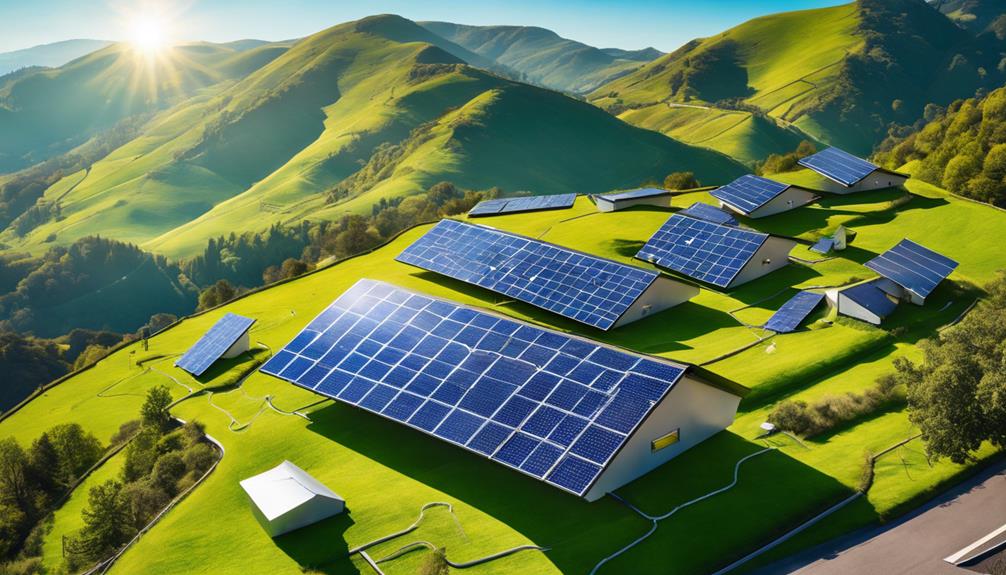
Understanding On Grid Solar Systems
On grid solar systems are photovoltaic (PV) setups that connect directly to the local utility grid. This means that any electricity generated by your solar panels can be used immediately, and any excess energy can be fed back into the grid. This system is also known as grid-tied solar, and it’s gaining popularity among homeowners and businesses alike due to its efficiency and cost-effectiveness. By harnessing the power of the sun, on grid solar systems provide a sustainable energy solution that can significantly reduce your electricity bills and carbon footprint.
The Benefits of On Grid Solar Energy
One of the most compelling reasons to invest in on grid solar is the financial savings it offers. By generating your own electricity, you can drastically cut down on your monthly utility expenses. Furthermore, many regions offer incentives such as tax credits and rebates, making the initial investment more manageable. Additionally, on grid solar systems typically require less maintenance than off-grid systems, as they rely on the utility grid for backup power during cloudy days or at night. Overall, the benefits of on grid solar systems extend beyond financial savings to include environmental advantages as well.
How On Grid Solar Works
The mechanics of on grid solar systems are relatively straightforward. Solar panels installed on your roof or property capture sunlight and convert it into electricity through photovoltaic cells. This electricity is then directed to an inverter, which converts the direct current (DC) generated by the panels into alternating current (AC) that can be used in your home. Any surplus energy not used can be sent back to the grid, often earning you credits on your utility bill through net metering. This seamless integration with the grid makes on grid solar an attractive choice for many homeowners.
Cost Considerations for On Grid Solar Systems
When evaluating whether to install an on grid solar system, it’s essential to consider the overall costs involved. The initial installation cost can vary based on the size of the system, the type of panels selected, and any additional equipment needed such as inverters or mounting hardware. However, the long-term savings on electricity bills and potential government incentives can significantly offset these initial expenses. Additionally, many financing options are available, including solar loans and leases, making it easier for homeowners to transition to solar energy without a hefty upfront payment.
Environmental Impact of On Grid Solar Energy
Transitioning to on grid solar energy has a profound impact on the environment. By utilizing renewable energy sources, you contribute to a decrease in greenhouse gas emissions and reliance on fossil fuels. Solar energy is one of the cleanest forms of energy, and when adopted on a large scale, it can significantly reduce the carbon footprint of entire communities. Furthermore, on grid solar systems promote energy independence, allowing individuals to produce their own power while supporting a sustainable future for generations to come.
Choosing the Right On Grid Solar Installer
Selecting a reputable and experienced installer is crucial for the success of your on grid solar project. Look for companies with a solid track record and positive customer reviews. It’s also beneficial to obtain multiple quotes to compare pricing and services offered. Ensure that the installer is licensed, insured, and knowledgeable about local regulations and incentives. A reliable installer will not only help you choose the right system for your needs but will also guide you through the entire installation process, ensuring a seamless experience.
Common Myths About On Grid Solar Systems
Despite the growing popularity of on grid solar, several myths continue to persist. One common misconception is that solar panels are ineffective in cloudy or rainy climates. In reality, solar panels can generate electricity even on overcast days, although at a reduced capacity. Another myth is that solar energy is too expensive for the average homeowner. With advancements in technology and financing options, solar energy has become more accessible than ever. By debunking these myths, more homeowners can feel empowered to consider on grid solar as a viable energy solution.
The Future of On Grid Solar Energy
As technology continues to advance, the future of on grid solar energy looks promising. Innovations in solar panel efficiency, battery storage systems, and smart grid technology are paving the way for a more sustainable energy landscape. Additionally, as governments and communities increasingly prioritize renewable energy, we can expect further incentives and support for solar installations. Investing in on grid solar today not only benefits you financially but also contributes to a greener planet, making it a wise choice for environmentally-conscious individuals.
In conclusion, on grid solar systems present an incredible opportunity for homeowners and businesses to harness renewable energy while enjoying significant financial savings. By understanding the mechanics, benefits, and future of on grid solar, you can make an informed decision about transitioning to this sustainable energy solution. Whether you’re motivated by environmental concerns, financial savings, or both, on grid solar systems are a smart investment for a brighter, cleaner future.





